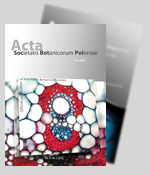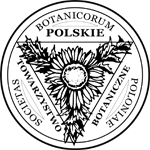Morphogenesis of root nodules in white clover. I. Effective root nodules induced by the wild type Rhizobium leguminosarium biovar. trifolii
Barbara Łotocka, Joanna Kopcińska, Władysław Golinowski
Abstract
The research aimed at investigating the morphogenesis of cylindrical root nodules in Trifolium repens L. induced by the wild type Rhizobium leguminosarum biovar. trifolii strain 24. It has been demonstrated that the ontogenesis of a nodule begins with a transverse division of cells of the pericycle followed by the dedifferentiation and divisions of cells of the endodermis and inner layers of the primary root cortex. Shifting of the nodule meristem from its initially lateral to the apical position characteristic for cylindrical nodules was observed. Bacteroidal, cortical and vascular tissues of the nodule are described up to 42 days after inoculation. At that time typical degraded zone had not yet appeared in the nodules.
Keywords
pericycle; endodermis; root nodule primordium; root nodule structure; bacteroidal tissue; Trifolium repens L.
DOI:
https://doi.org/10.5586/asbp.1997.032
Journal ISSN:- 2083-9480 (online)
- 0001-6977 (print; ceased since 2016)
| | This is an Open Access journal, which distributes its content under the terms of the Creative Commons Attribution License, which permits redistribution, commercial and non-commercial, provided that the content is properly cited. | |
| | |







